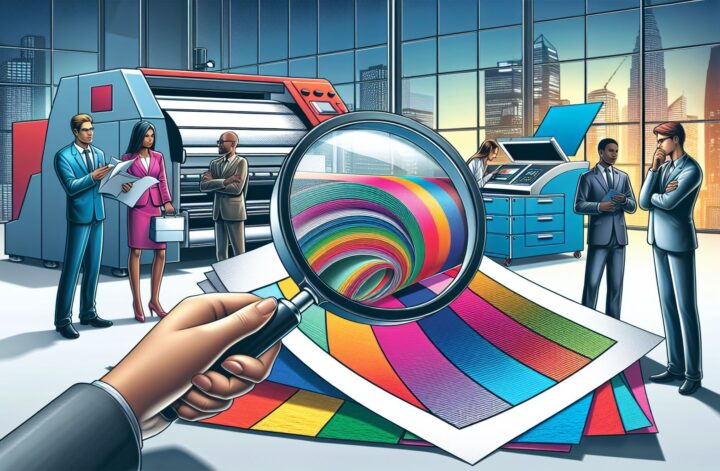Introduction
In today’s digital age, the importance of printed materials may often be overlooked. However, the impact of printing materials remains crucial in various aspects of our lives, from business and marketing to personal and artistic endeavors. Printing technology has come a long way, and with advancements in materials and techniques, the possibilities of printed media have expanded tremendously. From high-quality brochures and business cards to eye-catching posters and packaging, the choice of materials significantly influences the overall effectiveness, visual appeal, durability, and sustainability of printed content. In this article, we will explore the various printing materials available today and delve into the ways they can enhance visual content and communication.
Body
1. Paper and Cardstock
Paper is the most widely used material for printing, offering a diverse range of weights, textures, and finishes. Different types of paper are suitable for specific applications, depending on the desired outcome. Lightweight papers are often used for documents, flyers, and newsletters, while thicker cardstocks are commonly employed for business cards, invitations, and postcards.
- Glossy Paper: With its shiny surface, glossy paper enhances color vibrancy and sharpness, making it ideal for promotional materials and photographs.
- Matte Paper: Matte paper provides a smooth, non-reflective surface, resulting in a sophisticated and elegant look. It reduces glare and is commonly used for brochures and presentations.
- Recycled Paper: As sustainability gains increasing importance, using recycled paper has become a popular choice. It maintains print quality while reducing the environmental impact.
- Textured Paper: Textured paper adds depth and character to printed materials, making them visually appealing and providing a tactile experience. It is often used in high-end packaging, wedding invitations, and art prints.
2. Synthetic and Specialty Materials
While paper remains a staple, numerous synthetic and specialty materials have emerged in the printing industry, offering unique advantages in terms of durability, water resistance, and creative possibilities.
- Vinyl: Vinyl is a flexible and weather-resistant material that is commonly used for outdoor signage, banners, and vehicle wraps. Its ability to withstand harsh conditions makes it a durable choice for long-term advertising campaigns.
- Acetate: Transparent and flexible, acetate is frequently used for overlays, transparencies, and packaging display windows. It adds a professional touch to presentations and is commonly employed by designers and architects.
- Fabric: Printing on fabric allows for the creation of stunning banners, flags, clothing, and interior decorations. Fabrics come in various compositions, such as cotton, polyester, and silk, each offering distinct qualities in terms of texture, color vibrancy, and durability.
- Metal: For a sleek and modern appearance, metals like aluminum and stainless steel can be printed on, creating unique signage, nameplates, and custom promotional items. Metal printing provides a sophisticated and long-lasting solution.
3. Finishing Techniques
Beyond the choice of materials, several finishing techniques can enhance the visual appeal and durability of printed materials:
- Lamination: This process involves applying a thin layer of plastic film to printed materials, providing protection against wear, tear, moisture, and UV damage. Lamination can be used on a variety of surfaces, such as paper, cardstock, and vinyl.
- Embossing and Debossing: Embossing raises certain elements of a design, creating a three-dimensional effect. On the other hand, debossing pushes elements into the material, resulting in an indentation. These techniques add depth and texture, making printed materials visually engaging and tactile.
- Varnishing: Varnishes are applied to printed materials to enhance their appearance or provide protection. It can be used selectively, for instance, to highlight specific areas of a design or provide an overall finish to enhance color saturation and longevity.
- Foil Stamping: Foil stamping uses metallic or colored foil to apply a shiny or reflective finish to printed materials. This technique adds a luxurious and elegant touch to packaging, business cards, invitations, and certificates.
4. Environmental Considerations
With growing environmental concerns, the printing industry has made significant strides toward adopting sustainable practices. By choosing eco-friendly materials and employing responsible printing processes, businesses and individuals can minimize their carbon footprint.
- Recycled Materials: Opting for recycled paper or cardstock helps reduce the demand for virgin fibers and conserves valuable natural resources, while maintaining the quality of printed content.
- Soy and Vegetable-Based Inks: Traditional petroleum-based inks have been largely replaced with soy and vegetable-based alternatives. These inks are derived from renewable resources, emit fewer volatile organic compounds (VOCs), and promote healthier indoor air quality.
- Waterless Printing: Waterless printing technology conserves water and reduces waste generated during the printing process. It eliminates the need for dampening solutions, resulting in sharper images and reducing the environmental impact.
- Biodegradable and Compostable Materials: Some printing materials are specifically designed to biodegrade or compost over time, minimizing their impact on landfills and ecosystems.
Conclusion
Printing materials play a vital role in enhancing visual content and effective communication. By carefully selecting the appropriate materials, businesses can effectively convey their brand identity, captivate their target audience, and leave a lasting impression. From choosing the right paper to exploring specialty materials, the possibilities and combinations are endless. Additionally, by embracing sustainable printing practices, we can contribute to a greener future. As technology continues to evolve, printing materials will undoubtedly develop further, providing even more exciting opportunities to create visually stunning and sustainable printed content. So, next time you embark on a printing project, consider the impact of the materials you choose – it can make all the difference.



